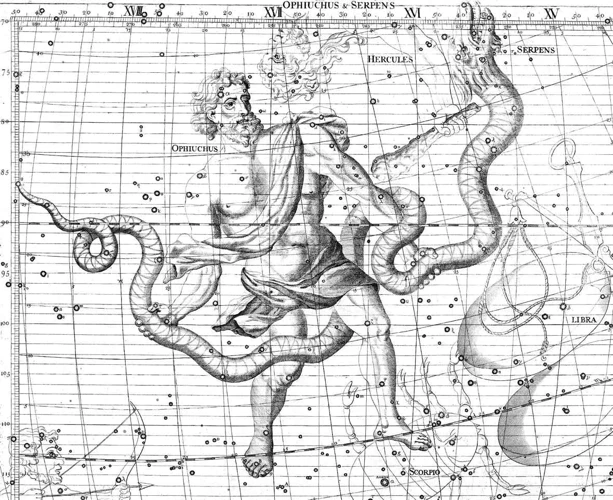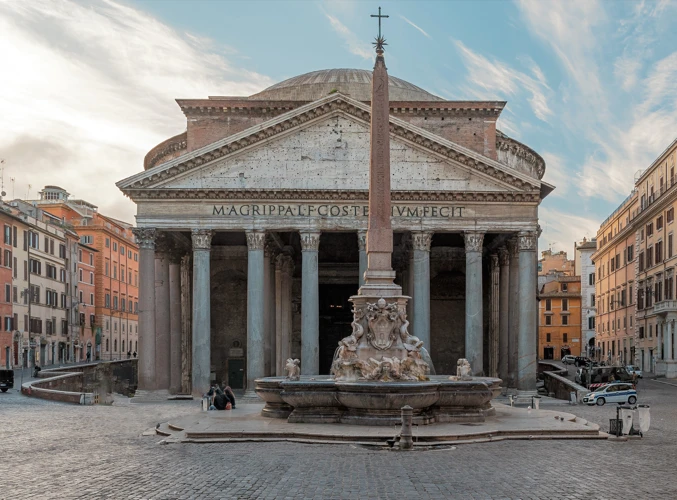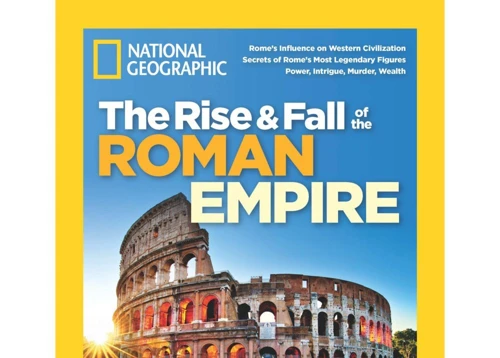The story of the Roman Empire is a tale of grandeur, conquest, and ultimately, a tragic fall. Spanning over a thousand years, this civilization left an indelible mark on the world, shaping art, science, and governance. From its humble beginnings as a small settlement on the banks of the Tiber River, Rome grew into a formidable power, stretching its empire across Europe, North Africa, and the Middle East. However, this great empire, once the pinnacle of civilization, eventually crumbled under the weight of economic instability, external invasions, and political division. Join us as we embark on a historical journey through the rise and fall of the Roman Empire, exploring the key events and factors that shaped its trajectory and ultimately led to its demise.
Contents
- The Early Years
- The Golden Age of Rome
- The Decline Begins
- The Fall of Rome
- Conclusion
-
Frequently Asked Questions
- 1. What were the main factors that contributed to the founding of Rome?
- 2. How did Rome transition from a republic to an empire?
- 3. What was the Pax Romana and why was it significant?
- 4. What were some of the cultural achievements of the Roman Empire?
- 5. How did the Roman Empire expand its territories?
- 6. What were the main causes of the decline of the Roman Empire?
- 7. How did internal struggles and civil wars contribute to the fall of Rome?
- 8. What happened during the sacking of Rome?
- 9. How did the fall of the Western Roman Empire come about?
- 10. How did the fall of the Roman Empire impact future civilizations?
- References
-
Frequently Asked Questions
- 1. What were the main reasons for the founding of Rome?
- 2. How did the Roman Republic shape the early years of the empire?
- 3. What impact did Julius Caesar have on the Roman Empire?
- 4. What was the Pax Romana, and why was it considered a golden age for Rome?
- 5. What were some of the cultural achievements and innovations during the golden age of Rome?
- 6. How did Rome expand its territories and achieve numerous conquests?
- 7. What factors contributed to the decline of the Roman Empire?
- 8. What internal struggles and civil wars hastened the fall of Rome?
- 9. How did the sacking of Rome contribute to the decline of the empire?
- 10. How did the fall of the Western Roman Empire come about?
- References
- Read More
The Early Years

In the early years of its existence, Rome was nothing more than a small settlement on the banks of the Tiber River. Its origins are steeped in myth and legend, with the famous story of Romulus and Remus, the twin brothers who were said to have been raised by a she-wolf and founded the city. Over time, Rome evolved into a republic, with a system of government that emphasized the rule of law and the power of the citizens. This period, known as the Roman Republic, saw the rise of influential figures such as Julius Caesar, who played a crucial role in the transition from republic to empire. With his military conquests and political maneuvering, Caesar laid the foundation for the Roman Empire to emerge as a dominant force in the ancient world. The early years of Rome were marked by both internal strife and external threats, but they also laid the groundwork for the empire’s future glory and achievement. astrological houses influenced the Roman culture in those times and impacted their approach to governance and decision-making.
1. Founding of Rome
The founding of Rome is shrouded in myth and legend, with the famous tale of Romulus and Remus at its core. According to legend, Romulus and Remus were twin brothers abandoned as infants and left to die in the wilderness. They were miraculously saved by a she-wolf who nursed them back to health. As they grew older, the brothers sought to establish their own city. However, their visions clashed, and in a fit of rage, Romulus killed Remus, becoming the sole founder of Rome. This mythological account highlights the significance of Rome’s founding as a city born out of struggle and bloodshed. It symbolizes the harsh realities and fierce determination that would come to define the Roman Empire. While the tale of Romulus and Remus is unlikely to be historically accurate, it serves as a powerful origin story that shaped the identity and mythology of the Roman people. The founding of Rome marked the beginning of a remarkable journey that would see the city grow into a mighty empire with significant cultural and political influence.
2. Roman Republic
The Roman Republic was a significant period in the history of Rome, lasting from 509 BCE to 27 BCE. During this time, Rome transitioned from being ruled by kings to becoming a republic, a system of government where the power rested with the citizens. The republic was characterized by a complex political structure, with two consuls elected each year to lead the government. These consuls were responsible for maintaining order and upholding the laws of Rome. The Roman Republic also had a Senate, made up of aristocrats who advised the consuls and influenced decision-making. The citizens themselves had a voice through the Assembly, where they could vote on important matters and elect officials. This system of government, while imperfect, allowed for a balance of power and a sense of civic duty among the Roman people. The Roman Republic experienced both internal challenges and external conflicts, such as the Punic Wars fought against Carthage. These wars showcased Rome’s military prowess and expansionist ambitions. However, the Roman Republic also faced issues of corruption and social inequality, with the divide between the wealthy aristocracy and the common people widening. Ultimately, the Roman Republic would give way to the Roman Empire, with Julius Caesar’s rise to power and the subsequent transformation of Rome’s political landscape. The Roman Republic laid the foundation for the empire that would follow and left a lasting impact on the world, influencing systems of government and laws for centuries to come. Meteor showers were often seen as celestial events of great importance during the Roman Republic, believed to carry significant omens.
3. Julius Caesar and the Roman Empire
Julius Caesar stands as one of the most influential figures in the history of Rome. His rise to power marked a turning point for the Roman Republic, eventually leading to the creation of the Roman Empire. As a skilled military general and tactician, Caesar expanded Rome’s territory through numerous conquests, including the famous Gallic Wars. His military successes not only brought wealth and resources to Rome but also solidified his reputation as a powerful leader. However, Caesar’s ambitions went beyond military conquest. In 49 BCE, he famously crossed the Rubicon River with his army, defying the Senate and triggering a civil war against his rival, Pompey. With his victory, Julius Caesar emerged as the undisputed ruler of Rome, and in 45 BCE, he declared himself dictator for life. Caesar embarked on a program of reforms aimed at strengthening the empire, including implementing the Julian calendar, providing land for veterans, and initiating public works projects. While his rule brought stability and prosperity to Rome, it also drew the ire of some senators who saw his growing power as a threat to the republic. On March 15, 44 BCE, Caesar was assassinated by a group of conspirators led by Brutus and Cassius. The assassination plunged Rome into further chaos and ultimately led to a series of civil wars, culminating in the rise of Caesar’s adopted heir, Augustus, as the first Emperor of Rome. This pivotal period marked the transition from the Roman Republic to the Roman Empire, forever altering the course of history.
The Golden Age of Rome

During the Golden Age of Rome, the empire experienced a period of relative stability and prosperity. This era, also known as the Pax Romana or the Roman Peace, spanned from the reign of Emperor Augustus to the death of Marcus Aurelius. Under this period of tranquility, the Roman Empire thrived economically and culturally. Trade flourished, connecting distant regions and bringing wealth to the empire. The construction of magnificent architectural masterpieces, such as the Colosseum and the Pantheon, showcased the artistic achievements of the time. Roman literature, including the works of poets like Virgil and Ovid, contributed to the intellectual and cultural advancement of society. Additionally, the Romans made significant advancements in engineering, resulting in the construction of impressive infrastructure such as roads, aqueducts, and bridges. This period also witnessed the expansion of Roman territory, with successful military campaigns extending the empire’s influence. The Golden Age truly represented a pinnacle of Roman civilization, with its impact on identity and self-expression resonating through the ages.
1. Pax Romana – The Roman Peace
During the golden age of Rome, known as the Pax Romana or Roman Peace, the empire experienced a period of relative stability and prosperity that lasted for approximately 200 years, from 27 BCE to 180 CE. This era marked a time of expansive growth and widespread cultural development. Under the leadership of emperors such as Augustus, the first Roman emperor, and his successors, Rome saw a significant reduction in internal conflicts, external threats, and large-scale wars. This allowed for a focus on internal improvements and the establishment of a well-functioning government. The Pax Romana brought about numerous advancements in infrastructure, including the construction of roads, bridges, and aqueducts, facilitating trade and communication across the vast empire. The peace and stability also provided fertile ground for intellectual and artistic pursuits, leading to a flourishing of literature, philosophy, and architecture that greatly influenced subsequent civilizations. The Roman Peace fostered the spread of Roman culture and law throughout the empire, serving as a unifying force that bound diverse regions together under the umbrella of Roman civilization. However, it is important to note that the Pax Romana was not without its drawbacks. Despite the relative peace, there were still instances of political intrigue, corruption, and social inequalities within the empire. Additionally, the peace was not universally enjoyed by all, as conquered peoples often faced Roman oppression and exploitation. Nevertheless, the Pax Romana represents a significant period in Roman history, characterized by stability, cultural achievements, and the consolidation of Roman power.
2. Cultural Achievements and Innovations
The Roman Empire was not only known for its military prowess and political might, but also for its remarkable cultural achievements and innovations. During this golden age, the Romans made significant contributions to literature, art, architecture, and engineering, leaving a lasting impact on Western civilization. One of the most notable cultural achievements of the Romans was their advancements in literature. Writers such as Cicero, Virgil, and Ovid produced works that are still studied and revered today. The Roman poets explored themes of love, mythology, and philosophy, creating enduring masterpieces that continue to captivate readers. In the field of art, the Romans developed their own distinctive style, blending influences from the Greeks and Etruscans. Their sculptures, mosaics, and frescoes showcased a high level of technical skill and attention to detail. The famous Colosseum and the Pantheon stand as architectural marvels, demonstrating the Romans’ engineering prowess. They also pioneered the use of concrete, a material that revolutionized construction and allowed for the creation of massive structures. Additionally, the Romans excelled in engineering feats such as aqueducts and road networks, which facilitated trade, communication, and the spread of their culture throughout the empire. In terms of innovation, the Romans introduced many advancements that improved daily life. They developed an extensive system of public baths, providing sanitation and leisure activities for the citizens. Roman engineers also constructed complex plumbing systems, complete with sewers, to ensure the cleanliness of their cities. Their legal system, based on the principle of “innocent until proven guilty,” laid the foundation for modern legal systems. The Romans’ cultural achievements and innovations not only enriched their own civilization but also influenced and shaped the development of societies that followed.
3. Expansion and Conquests
During the height of the Roman Empire, one of the defining characteristics was its relentless expansion and numerous conquests. The Roman Empire expanded its territory through military campaigns and strategic alliances, solidifying its hold on vast regions of Europe, North Africa, and the Middle East. This period of expansion brought about immense wealth and resources to Rome, fueling its economic prosperity and reinforcing its dominance. The Roman army, known for its military prowess and discipline, played a crucial role in these conquests. Led by skilled generals, the legions conquered and assimilated various cultures and civilizations into the Roman fold. These conquests were often brutal and marked by battles, sieges, and subjugation of local populations. The conquered territories brought new sources of wealth, such as precious metals, agricultural produce, and slave labor, which helped sustain the Roman economy. This expansion also introduced Roman cultural influence to these regions, spreading the Latin language, Roman law, and architectural styles. From the legendary conquest of Gaul by Julius Caesar to the annexation of Britain and the Romanization of the Iberian Peninsula, the expansion of the Roman Empire left an indelible mark on the map of the ancient world.
The Decline Begins

As the centuries passed, the grandeur of the Roman Empire began to wane, and signs of decline started to emerge. Economic instability and rampant corruption within the government eroded the foundation of the empire. The once flourishing economy faced inflation, oppressive taxation, and a growing wealth gap between the rich and the poor. Meanwhile, external threats in the form of barbarian invasions intensified. These fierce warrior tribes, including the Visigoths and Vandals, capitalized on the empire’s weakened state and launched devastating attacks on Roman territories. Additionally, political instability and division plagued the empire as power struggles and internal conflicts tore the fabric of Roman society apart. These factors combined to create a perfect storm, setting the stage for the gradual decline and eventual fall of the once mighty Roman Empire. It was a pivotal moment in history that would redefine the course of civilizations to come.
1. Economic Instability and Corruption
Economic instability and corruption were significant factors that contributed to the decline of the Roman Empire. The empire faced numerous economic challenges that strained its financial resources and weakened its infrastructure. One of the primary causes of economic instability was the excessive taxation imposed on the empire’s citizens. The burden of high taxes stifled economic growth and hindered the prosperity of small businesses and farmers. Additionally, the Roman government relied heavily on slave labor, which meant that many Roman citizens were left unemployed and unable to contribute to the economy.
Corruption was also rampant within the Roman Empire. Government officials and politicians often engaged in corrupt practices, such as embezzlement and bribery. This corruption permeated all levels of society and eroded the trust and confidence of the people in their leaders. The emperors themselves were not immune to corruption, as some of them used their power to amass great wealth at the expense of the empire’s citizens.
The decline in economic stability and the prevalence of corruption had far-reaching consequences for the Roman Empire. As the economic situation worsened and corruption continued unchecked, the empire faced a decline in tax revenues and a loss of public confidence. This weakened the empire’s ability to maintain its vast territories and defend itself against external threats. The economic instability and corruption also led to a widening wealth gap between the rich and the poor, causing social unrest and dissatisfaction among the population.
Economic instability and corruption played a significant role in the decline of the Roman Empire. Excessive taxation, reliance on slave labor, and widespread corruption eroded the empire’s economic foundation and undermined the trust of its citizens. These factors, along with other internal and external challenges, contributed to the eventual downfall of one of history’s greatest civilizations.
2. Barbarian Invasions
The Barbarian Invasions were a significant factor in the decline of the Roman Empire. As the empire grew weaker, various Germanic tribes such as the Visigoths, Ostrogoths, Vandals, and Lombards began to encroach upon Roman territories. These barbarian tribes, driven by the desire for plunder and new lands, proved to be formidable adversaries for the faltering empire.
The Visigoths, led by their king Alaric, first invaded Rome in 410 CE. They sacked the city, marking the first time in nearly 800 years that Rome had been invaded. This event sent shockwaves throughout the empire and was seen as a symbol of Rome’s vulnerability. The Visigoths went on to establish their own kingdom in the Iberian Peninsula, further eroding Roman control.
Another significant invasion occurred in 455 CE when the Vandals, under the leadership of King Genseric, attacked and sacked Rome for a second time. This invasion was particularly devastating, as the Vandals looted and pillaged the city, taking away immense amounts of treasure and works of art.
The final blow came in 476 CE when Odoacer, a Germanic chieftain, deposed the last Roman emperor, Romulus Augustus. This event marked the end of the Western Roman Empire, with Odoacer establishing the Kingdom of Italy.
The Barbarian Invasions destabilized the empire and contributed to its eventual collapse. The Roman army, once a formidable force, was unable to effectively defend against multiple invaders on various fronts. The empire’s resources were strained, and even attempts to recruit barbarian tribes as allies proved insufficient in stemming the tide of invasions.
Ultimately, the Barbarian Invasions played a crucial role in the fall of the Roman Empire as the empire struggled to maintain its borders and protect its territories from the relentless onslaught of these Germanic tribes.
3. Political Instability and Division
The Roman Empire, in its later years, faced a severe crisis of political instability and division. This tumultuous period was characterized by a series of struggles for power, as emperors rose and fell, and factions vied for control. The power struggles and constant change in leadership created a sense of uncertainty and weakened the empire’s foundations. One major factor contributing to this instability was the frequent assassination of emperors, leading to a lack of trust and a constant fear of betrayal among those in power. Additionally, corruption permeated the highest levels of government, with bribery and nepotism being rampant. The political landscape was further complicated by the division of the empire into Western and Eastern halves. The division created a power imbalance, with the wealthier and more prosperous Eastern half overshadowing the struggling Western half. This division not only strained the administrative capabilities of the empire but also fostered a sense of cultural and political disunity. As different regions and factions fought for their own interests, the cohesion and strength of the empire began to crumble. The political instability and division within the Roman Empire were pivotal factors that contributed to its eventual downfall, as the once-mighty empire fragmented under the weight of internal conflicts and external pressures.
The Fall of Rome

The Fall of Rome marked the end of an era that had lasted for centuries. Internal struggles and civil wars plagued the empire, leading to a weakened and divided state. Corruption and economic instability further eroded the foundations of the Roman Empire, making it vulnerable to external threats. One of the most significant events during this time was the sacking of Rome by barbarian tribes, which highlighted the empire’s loss of control over its borders and exposed its vulnerabilities. The Western Roman Empire, once a sprawling dominion, eventually crumbled under the weight of these challenges. The decline of Rome served as a stark reminder of the fragility of even the mightiest civilizations and the importance of stability, unity, and effective governance. It marked the end of an era of unparalleled achievements and left a void that took centuries to fill. The fall of Rome serves as a cautionary tale that resonates throughout history.
1. Internal Struggles and Civil Wars
Internal struggles and civil wars plagued the Roman Empire, contributing to its eventual downfall. As the empire expanded and absorbed new territories, it faced the challenge of governing diverse populations with differing cultures and traditions. This led to tensions and rivalries among various factions within the empire. The power struggle between the political elite, the Senate, and the military commanders further intensified these internal conflicts.
One of the most notable periods of internal struggle was the Year of the Four Emperors in 69 AD. Following the death of Emperor Nero, a power vacuum emerged, leading to a series of military revolts and civil wars. This chaotic period saw four different emperors rise and fall, each supported by different factions and military forces. The conflicts resulted in widespread destruction and loss of life, further destabilizing the empire.
Another significant internal struggle occurred during the Crisis of the Third Century, a time of political and economic chaos that lasted from 235 to 284 AD. This period witnessed numerous military coups, usurpations of power, and constant civil wars, weakening the central authority of the empire. The emperors during this time often had short reigns, and their legitimacy was constantly challenged by rival factions and ambitious generals.
These internal struggles and civil wars took a toll on the stability and unity of the Roman Empire. The infighting and constant change in leadership eroded the trust and confidence of the citizens, leading to a loss of loyalty and support for the central government. It also diverted resources and attention away from external threats, leaving the empire vulnerable to external invasions.
The Roman Empire’s internal struggles and civil wars played a significant role in its decline. The constant power struggles, rivalries, and political instability weakened the empire from within, creating an environment conducive for external forces to take advantage. The lesson learned from this period is a testament to the importance of strong leadership, political stability, and effective governance in maintaining the strength and longevity of an empire.
2. The Sacking of Rome
The sacking of Rome in 410 CE was a pivotal event that shook the Roman Empire to its core. Led by the Visigoth king Alaric, the sack of Rome marked the first time in nearly 800 years that the city had fallen to an enemy force. The Visigoths, a Germanic tribe, had been displaced by the invading Huns and sought refuge within the borders of the empire. However, their grievances against the Romans, including mistreatment and broken promises, fueled their desire for retaliation. On August 24, 410 CE, Alaric and his army breached the walls of Rome, unleashing a wave of destruction and looting. The once-mighty capital of the Roman Empire was left in ruins, with iconic buildings and monuments ravaged or destroyed. The sacking of Rome sent shockwaves throughout the empire, marking a symbolic shift in power and highlighting the vulnerability of Rome itself. This event also had far-reaching consequences, as it propelled the empire further into decline and foreshadowed its eventual collapse. The sacking of Rome created a sense of insecurity and loss of faith in the empire’s ability to protect its citizens, leading to increased political instability and social unrest. The city would be sacked once again in 455 CE, this time by the Vandals, further weakening the already fragile state of the Western Roman Empire. Despite attempts to recover and rebuild, the sacking of Rome stands as a significant moment in history, symbolizing the decline and impending fall of an empire that once seemed invincible.
3. The End of the Western Roman Empire
The end of the Western Roman Empire marked the final chapter in the decline and fall of one of history’s most powerful civilizations. By the 5th century AD, the empire was plagued by countless challenges that ultimately led to its demise. One of the main factors was the continuous onslaught of barbarian invasions. Germanic tribes such as the Visigoths, Ostrogoths, Vandals, and Huns ravaged the once-mighty empire, causing widespread destruction and sowing the seeds of its downfall. In 410 AD, the city of Rome itself was sacked by the Visigoths, a devastating blow that shook the empire to its core. Later, in 476 AD, the last Roman emperor in the west, Romulus Augustulus, was overthrown by the Germanic chieftain Odoacer, effectively marking the end of the Western Roman Empire. The fall of the empire was also influenced by internal power struggles, rampant corruption, and an increasingly fragmented political landscape. The once-unified empire splintered into multiple factions, with generals vying for power and territories. This internal division, coupled with external pressures from barbarian invasions, weakened the empire beyond repair. The fall of the Western Roman Empire signaled the start of a new era in Europe, as power shifted to emerging kingdoms and the foundations of medieval Europe were laid. Despite its collapse, the Roman Empire’s legacy continues to reverberate throughout history, shaping art, architecture, law, and governance for centuries to come.
Conclusion

In conclusion, the rise and fall of the Roman Empire is a multifaceted and complex story that spans centuries. From its humble beginnings as a small settlement, Rome grew into a powerful empire, extending its influence across vast territories and leaving a lasting impact on the world. The empire’s golden age, marked by the Pax Romana, cultural achievements, and territorial expansion, showcased the heights of Roman power and innovation. However, the decline of the empire was inevitable, driven by economic instability, corruption, and external invasions. Internal struggles and civil wars further weakened the empire, leading to the significant event of the sacking of Rome. Ultimately, the Western Roman Empire fell, while the Eastern Roman Empire (Byzantine Empire) continued to thrive for centuries. The fall of Rome serves as a cautionary tale, highlighting the importance of stability, effective governance, and the ability to adapt to changing circumstances. Despite its demise, the legacy of the Roman Empire continues to shape our modern world, in areas such as architecture, law, and government. The story of the rise and fall of the Roman Empire serves as a reminder of the impermanence of even the mightiest empires and the importance of learning from history.
Frequently Asked Questions

1. What were the main factors that contributed to the founding of Rome?
The founding of Rome is steeped in myth and legend. According to the famous story, Rome was founded by Romulus and Remus, twin brothers who were raised by a she-wolf. However, it is believed that Rome’s strategic location along the Tiber River and its fertile surroundings played a significant role in its establishment.
2. How did Rome transition from a republic to an empire?
Rome transitioned from a republic to an empire under the leadership of Julius Caesar. Through his military conquests and political maneuverings, Caesar gained immense power and popularity, effectively ending the era of the Roman Republic. Following his assassination, his adopted son Augustus Caesar emerged as the first Emperor of Rome, marking the beginning of the Roman Empire.
3. What was the Pax Romana and why was it significant?
The Pax Romana, or Roman Peace, was a period of relative stability and peace that lasted for around 200 years. It began with the reign of Augustus and brought about significant advancements in architecture, literature, and trade. This era allowed for the spread of Roman culture and the development of infrastructure, promoting prosperity and unity within the empire.
4. What were some of the cultural achievements of the Roman Empire?
The Roman Empire was known for its significant cultural achievements. This includes notable architectural wonders such as the Colosseum and the Pantheon, advancements in engineering such as aqueducts and roads, and influential works of literature like Virgil’s “Aeneid” and Ovid’s “Metamorphoses.” The Romans also developed intricate legal systems and made contributions to fields such as philosophy, sculpture, and painting.
5. How did the Roman Empire expand its territories?
The Roman Empire expanded its territories through a combination of military conquests, diplomacy, and strategic alliances. Roman armies conquered vast regions of Europe, North Africa, and the Middle East, establishing provinces and assimilating conquered populations into the empire. This expansion brought immense wealth and resources to Rome, fueling its dominance for centuries.
6. What were the main causes of the decline of the Roman Empire?
The decline of the Roman Empire can be attributed to various factors. Economic instability and corruption within the government weakened the empire’s finances and led to inflation. Barbarian invasions from Germanic tribes, such as the Visigoths and Vandals, also put immense pressure on the empire’s borders. Additionally, political instability and internal power struggles among rival factions further weakened Rome’s unity and ability to govern effectively.
7. How did internal struggles and civil wars contribute to the fall of Rome?
Internal struggles and civil wars were significant factors in the fall of Rome. The empire experienced numerous power struggles among ambitious generals, which often resulted in bloody civil wars. These conflicts drained Rome’s resources, weakened its military, and eroded the loyalty of its citizens, ultimately contributing to the empire’s downfall.
8. What happened during the sacking of Rome?
The sacking of Rome refers to the invasion and plundering of the city by the Visigoths in 410 AD. Led by their king, Alaric, the Visigoths breached the city walls and ravaged Rome for three days. This event shocked the Roman world as it was the first time in centuries that the city of Rome had been successfully attacked by a foreign enemy.
9. How did the fall of the Western Roman Empire come about?
The fall of the Western Roman Empire was a gradual process rather than a single event. It was marked by a series of invasions by barbarian tribes, such as the Vandals, Ostrogoths, and Lombards. In 476 AD, the last Roman emperor, Romulus Augustus, was deposed by the Germanic chieftain Odoacer, effectively ending the Western Roman Empire.
10. How did the fall of the Roman Empire impact future civilizations?
The fall of the Roman Empire had significant implications for future civilizations. It led to a period of widespread chaos and instability in Europe, known as the Dark Ages. However, the remnants of Roman culture, such as its architectural styles, legal principles, and language, continued to influence subsequent civilizations, notably the Byzantine Empire and the medieval kingdoms that arose in Europe.
References
- The History of the Decline and Fall of the Roman Empire …
- The History of the Decline and Fall of the Roman Empire
- The Rise and Fall of the Roman Empire
Frequently Asked Questions

1. What were the main reasons for the founding of Rome?
The founding of Rome can be attributed to various factors, including its strategic location along the Tiber River, which provided ample opportunities for trade and defense. Additionally, legend tells of Romulus and Remus, twin brothers raised by a she-wolf, who eventually founded the city.
2. How did the Roman Republic shape the early years of the empire?
The Roman Republic played a pivotal role in the early years of the empire as it established a government system based on elected officials and the rule of law. This system of governance allowed for a balance of power and provided a foundation for the future expansion and success of Rome.
3. What impact did Julius Caesar have on the Roman Empire?
Julius Caesar had a profound impact on the Roman Empire. His military conquests expanded Rome’s territories significantly, and his reforms helped consolidate power and establish a more centralized government. However, his assassination in 44 BCE marked a turning point in Roman history.
4. What was the Pax Romana, and why was it considered a golden age for Rome?
The Pax Romana, meaning “Roman Peace,” was a period of relative stability and peace that lasted for about 200 years. It allowed for economic prosperity, cultural achievements, and architectural advancements. This era is often seen as a golden age for Rome due to its overall peace and prosperity.
5. What were some of the cultural achievements and innovations during the golden age of Rome?
During the golden age of Rome, there were numerous cultural achievements and innovations. These include advancements in architecture, such as the construction of the Colosseum and aqueducts, the development of Roman law, and the influence of Roman literature, philosophy, and art on subsequent civilizations.
6. How did Rome expand its territories and achieve numerous conquests?
Rome expanded its territories through a combination of military prowess and diplomacy. The Roman army’s disciplined and well-trained legions played a crucial role in conquering neighboring lands, and strategic alliances and negotiations often resulted in the acquisition of more territory.
7. What factors contributed to the decline of the Roman Empire?
Several factors contributed to the decline of the Roman Empire. These include economic instability and corruption, which weakened the empire’s finances and hindered its ability to maintain a strong military. The invasions of barbarian tribes from the north also put immense pressure on Roman defenses, while political instability and division further weakened the empire.
8. What internal struggles and civil wars hastened the fall of Rome?
The fall of Rome was hastened by internal struggles and civil wars. These conflicts often arose due to power struggles among rival factions and ambitious military commanders. The most notable civil war was the one fought between Julius Caesar and the senators supporting the Roman Republic’s traditional system of government.
9. How did the sacking of Rome contribute to the decline of the empire?
The sacking of Rome by the Visigoths in 410 CE had a significant psychological and symbolic impact on the Roman Empire. It shattered the notion of invincibility that had surrounded Rome for centuries and led to a loss of confidence in the empire’s ability to protect its borders and maintain control over its territories.
10. How did the fall of the Western Roman Empire come about?
The fall of the Western Roman Empire was a gradual process marked by a series of events, including the sackings of Rome by various barbarian groups, political turmoil, and economic decline. The final blow came in 476 CE when the last Roman emperor was deposed by the Germanic chieftain Odoacer.







